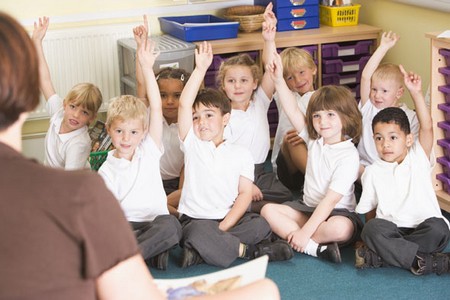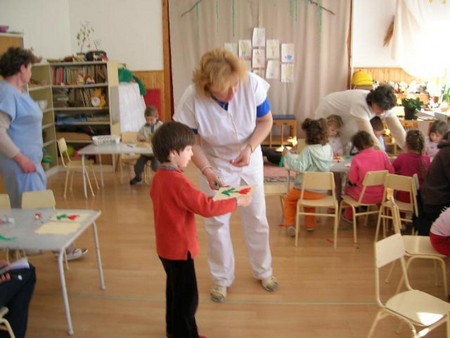Best Way to Choose a School for your Children
In some school-boards, parents can’t choose the school their child will attend. In others, you have a choice. Most parents select their local primary school because most of their child’s friends will attend that school. Starting school is a new stage in your child’s life, and the experience will be easier for her if her friends start school with her. Another reason to choose your local school is that your older children may already attend it; having children at two or three different schools can cause practical problems.
Whether your child goes to her local school or someplace else, you should be satisfied that the school you choose is the one most able to meet your child’s needs, the one you definitely want your child to attend. The only way you can find this out is by visiting the school yourself or, when choosing between a number of schools, by visiting each one. This may be time-consuming, but this time is well spent—after all, your child will spend six or eight or ten years there!
Phone each school well in advance—in the term before your child’s starting date—in order to make an appointment with the principal. The response you receive to your telephone call will give you an initial idea of the way the school reacts to visitors. Don’t bring your child with you when you go on your initial visit.
During this visit, you must know what to look for—for instance, the general atmosphere, the reading program used at the primary levels, musical activities. The following list gives suggestions for the issues you should probably consider, but you may be particularly concerned with some others. Make a list of questions and take it with you.
- Classroom teacher. If possible, meet the teacher who will be responsible for your child’s class. Talk to the teacher about the work he or she does, the equipment he or she uses, and the range of activities he or she provides for pupils. During your discussion—and don’t be afraid to ask lots of questions—assess the teacher’s attitude toward children, and decide whether you are comfortable with the ideas the teacher presents. Would you like to have this teacher if you were starting school?
- Staffing- Aside from your child’s teacher, you will want to know the number of other teachers and the total number of pupils. The school may have specialist teachers who have responsibility for such areas as pupils with learning difficulties, music, drama, or science. You can also inquire whether additional help is available from an assistant teacher.
- Building. A clean, solid school building does not necessarily mean that teaching standards are satisfactory. But children do learn better in a fresh, appealing classroom with adequate heating, than they do in a cold, shabby building, with paint peeling off the walls and water coming in through the roof. Have a good look around your child’s prospective classroom—it should have a stimulating appearance, with plenty of wall displays, separate work and play areas, and a good range of books and equipment.
- Educational standards. The early stage of schooling focuses more on settling in, learning to handle a routine, belonging to a group, and following class rules, than it does on learning in the academic sense. But your child will make great educational strides in these first few years, so ask about the school’s approach to the teaching of reading, writing, spelling, and math: the approach should be systematic and well planned.
- Breadth of curriculum. The school curriculum consists of more than the three Rs. Many subjects traditionally associated with secondary schooling are now also taught in primary schools, such as science, environmental studies, history, geography, and modern languages. The principal will tell you which of these are covered, and how frequently they appear in the curriculum. You may also want to inquire about other subjects, such as drama, art, music, library programs, and physical education.
- Computer technology. Although you may not be familiar with computers, your child will be by the time she leaves school. Most primary schools have computers available for their pupils, but not all of them use them in an effective, structured way. Ask the teachers about how they use computer technology as part of the curriculum, and the amount of time available for individual children to have hands-on experience.
- Parental liaison. Parents have a right to be made welcome in their child’s school, and to be kept up-to-date with her progress. This can be achieved through home-school diaries, parent afternoons, parent helpers in the classroom, and parents’ nights. Many schools operate an “open-door” policy for parents.
After talking about these points during your visit, you’ll be ready to make an informed choice. If you are still uncertain, think about the issues that trouble you, and perhaps make a second visit before reaching a decision. This advice also applies to private schools; don’t assume that all private schools are of a high standard simply because parents pay for their children to attend.
Categories
Advertisements
Recent Articles
 How to Understand Bed Sizes – A Small Guide
How to Understand Bed Sizes – A Small Guide How to Select Some Must Have Kitchen Accessories
How to Select Some Must Have Kitchen Accessories Best Way to Change a Car Tire
Best Way to Change a Car Tire Best Way to Write an Affirmation
Best Way to Write an Affirmation Best Way to Take Charge of Your Financial Life
Best Way to Take Charge of Your Financial Life Best Way to Survive a Party When You Don’t Know Anyone
Best Way to Survive a Party When You Don’t Know Anyone Best Way to Stop Self Sabotaging Yourself
Best Way to Stop Self Sabotaging Yourself Best Way to Start Journal Writing
Best Way to Start Journal Writing Best Way to Speak with a Powerful Voice
Best Way to Speak with a Powerful Voice Best Way to Simplify Your Life
Best Way to Simplify Your Life Best Way to Respond to a Put-Down
Best Way to Respond to a Put-Down Best Way to Reduce Acne Breakouts
Best Way to Reduce Acne Breakouts Best Way to Recover from Dining Disasters
Best Way to Recover from Dining Disasters Best Way to Quit Your Job Gracefully
Best Way to Quit Your Job Gracefully Best Way to Make Your Own Website
Best Way to Make Your Own Website



Leave a Reply